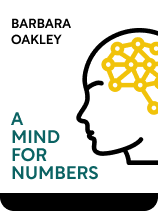

This article is an excerpt from the Shortform book guide to "A Mind for Numbers" by Barbara Oakley. Shortform has the world's best summaries and analyses of books you should be reading.
Like this article? Sign up for a free trial here .
What makes information easy to remember? What are some specific factors of memorability?
If you want to get information to stick in your memory, it helps to recall it often. Of course, it also has to be memorable to begin with. Memorability increases as the information connects to more and more parts of your brain.
Read more to learn how to remember something by making it more memorable in the first place.
Making Information More Memorable
Your memory depends on “chunked” information. Oakley explains that the more connections the chunk has, the more memorable it is, and the more often you access it, the stronger the connections become. More connections and stronger connections both make a chunk more accessible. Thus, there are two factors that determine how well a concept will stick in your memory: how memorable it is, and how often you recall it.
Oakley’s discusses techniques for making information more memorable by connecting it to more parts of your brain, starting with an overview of the factors of memorability.
12 Factors of Memorability
If you want to know how to remember something, start by making it more memorable to begin with. From Oakley’s discussion, we can identify a number of factors that determine how intrinsically memorable a piece of information is. In Moonwalking with Einstein, Joshua Foer similarly identifies factors that make information more memorable. The factors that Oakley and Foer identify are similar, but not identical. For comparison, we have extracted the following list of memorability factors from both A Mind for Numbers and Moonwalking with Einstein:
The Sensory Factor: According to Oakley, the more sensations (smell, feel, sound, visual appearance) you attribute to a concept, the easier it will be for you to remember.
- (Shortform note: Foer echoes this assertion, pointing out that every sense you connect an idea to provides one more possible cue to help you remember it. Suppose you’re memorizing your grocery list, and the first thing on your list is garlic. If you take time to picture what the garlic looks like, smells like, and tastes like, you have a much better chance of remembering it than if you just try to remember the word “garlic.”)
The Association Factor: According to Oakley, the more existing chunks of information you can associate a new piece of information with, the easier it will be for you to remember. Oakley further asserts that this holds, regardless of whether the associations are actual or metaphorical.
- (Shortform note: Foer implies this in his discussion of the sensory factor, but doesn’t generalize it quite as much as Oakley does. By way of illustration, he says that if you’re shown a picture of a person and told that her last name is Baker, you won’t remember “baker” as well as if you’re told she is a baker. This is because “Baker,” as a name, is an abstract concept without much to associate with it. As a profession, however, “baker” has more associations with other information in your brain, like the feel of kneading dough, the smell of cookies, the heat of an oven, and so on. Therefore, you should aim to associate anything you want to remember, even something as abstract as a person’s last name, with as many sensations as you can. This example serves to illustrate the association factor, even though the associations it presents are primarily sensory.)
The Movement Factor: According to Oakley, you are more likely to remember something if it involves moving your body.
- (Shortform note: Foer does not mention this factor. As Drazdzewski points out in a recent study of the relationship between memory and motion, this factor has been studied less than many of the other memorability factors.)
The Humor Factor: According to Oakley, the more something makes you laugh, the easier it is for you to remember it.
- [Shortform note: Foer reiterates this principle, and relates it to the novelty factor (which we will discuss shortly), saying that we naturally find humor interesting, and that makes it easier to remember.]
The Story Factor: According to Oakley, stories are notoriously memorable, perhaps because they promote chunking by weaving events or concepts together through cause and effect.
- (Shortform note: In presenting the history of memory techniques, Foer discusses oral traditions of storytelling in ancient cultures, but he focuses on the mnemonic devices that were built into the stories to make them more memorable. He doesn’t seem to have considered the possibility that the narrative itself could serve a mnemonic function. However, formal studies substantiate Oakley’s assertion that stories are more memorable, and most researchers corroborate her suggestion that cause and effect is what makes them memorable. Other researchers suggest that stories are memorable because the social interaction between characters makes them more personal.)
The Writing Factor: Oakley asserts that you are more likely to remember something if you write it down by hand than if you type it or only read it. Thus, she recommends hand-writing your notes in class, to make them more memorable.
- (Shortform note: Foer does not mention this factor. He seems to see writing as harmful to memory, at least indirectly: He asserts that the modern trend of writing down every fact we need to keep track of causes us to depend less on our memories, which allows our memory capabilities to atrophy.)
The Speech Factor: According to Oakley, if you say something out loud, you are more likely to remember it than if you don’t.
- [Shortform note: Foer doesn’t address this factor directly. He recounts that ancient cultures used songs and poetry extensively for transmitting information, because mnemonic devices like rhyme, rhythm, and alliteration make songs easier to remember. These devices are more obvious when you sing a song or read a poem out loud than if you read it silently. This could provide a partial basis for Oakley’s assertion that saying something out loud helps you remember it. However, other researchers attribute both the writing factor and the speech factor to the production effect: The more you participate in producing something (such as by writing it out or giving an oral performance of it), the more deeply it gets ingrained in your memory.]
The Spatial Factor: According to Oakley, your memory is naturally wired to connect visual information with spatial information, forming visuospatial map chunks. For example, think about how easy it is to learn the layout of a new apartment.
- (Shortform note: To Foer, this is the most important of all the memorability factors, because it provides the basis for the memory palace technique, which is the primary strategy that he focuses on.)
| Foer’s Other Factors for Memorability Foer also identifies several factors affecting memorability that Oakley does not include: The Novelty Factor: According to Foer, things that stand out as novel or unique are easier to remember than things that seem mundane or blend in with other similar ideas. The Personal Factor: According to Foer, it’s easier to remember things that relate to your own experiences. Although Oakley doesn’t list this factor explicitly, her discussion of the personification technique (which we’ll discuss later in this section) implies its existence. The Concreteness Factor: According to Foer, concepts that are more abstract are more difficult to remember than information that is more concrete. In the context of knowledge transfer, Oakley discusses how abstract concepts are often harder to learn at first, but then are more transferable to other applications once you understand them. However, she doesn’t relate this to the memorability of information as Foer does. The Structure Factor: According to Foer, information that is more structured is easier to remember. For example, poetic devices like rhyme and alliteration make phrases easier to remember, and a black-and-white checkerboard pattern is easier to remember than an arbitrary arrangement of black blotches on a white background. |

———End of Preview———
Like what you just read? Read the rest of the world's best book summary and analysis of Barbara Oakley's "A Mind for Numbers" at Shortform .
Here's what you'll find in our full A Mind for Numbers summary :
- How to make math and science intuitive
- Strategies for remembering complex concepts more easily
- How to build good study habits and avoid procrastination






